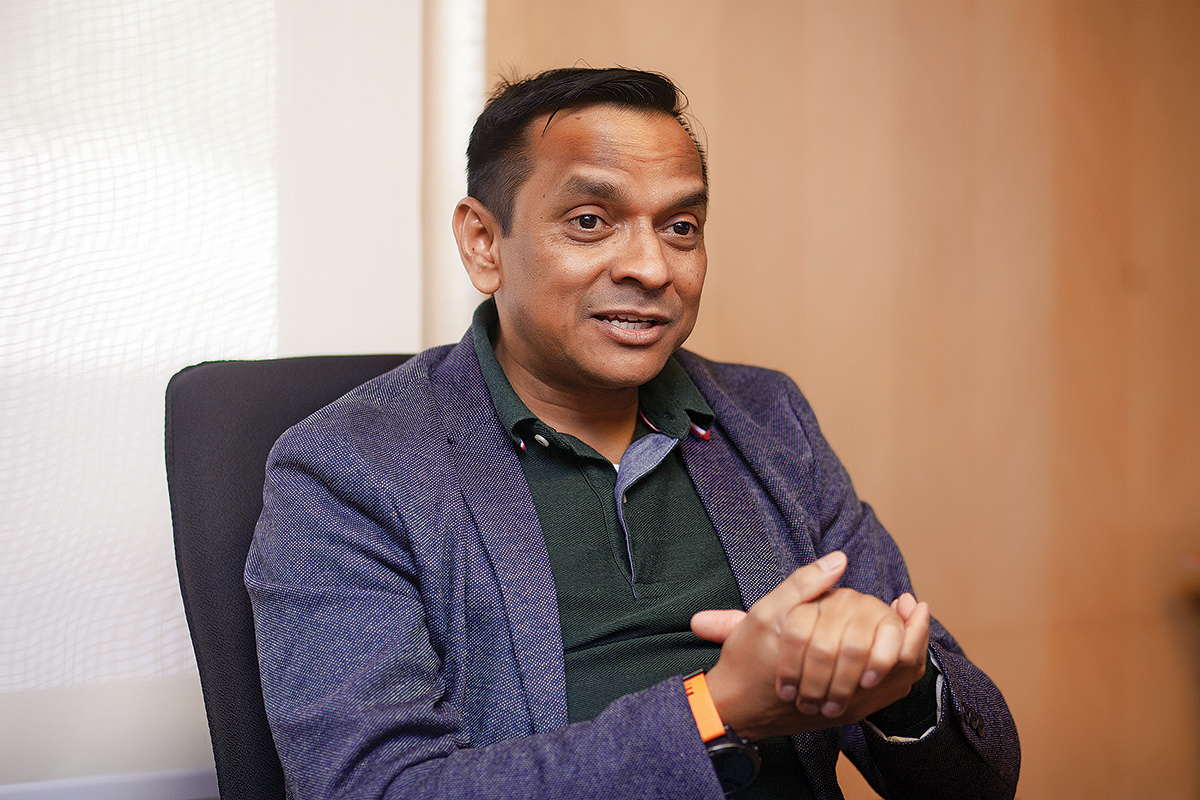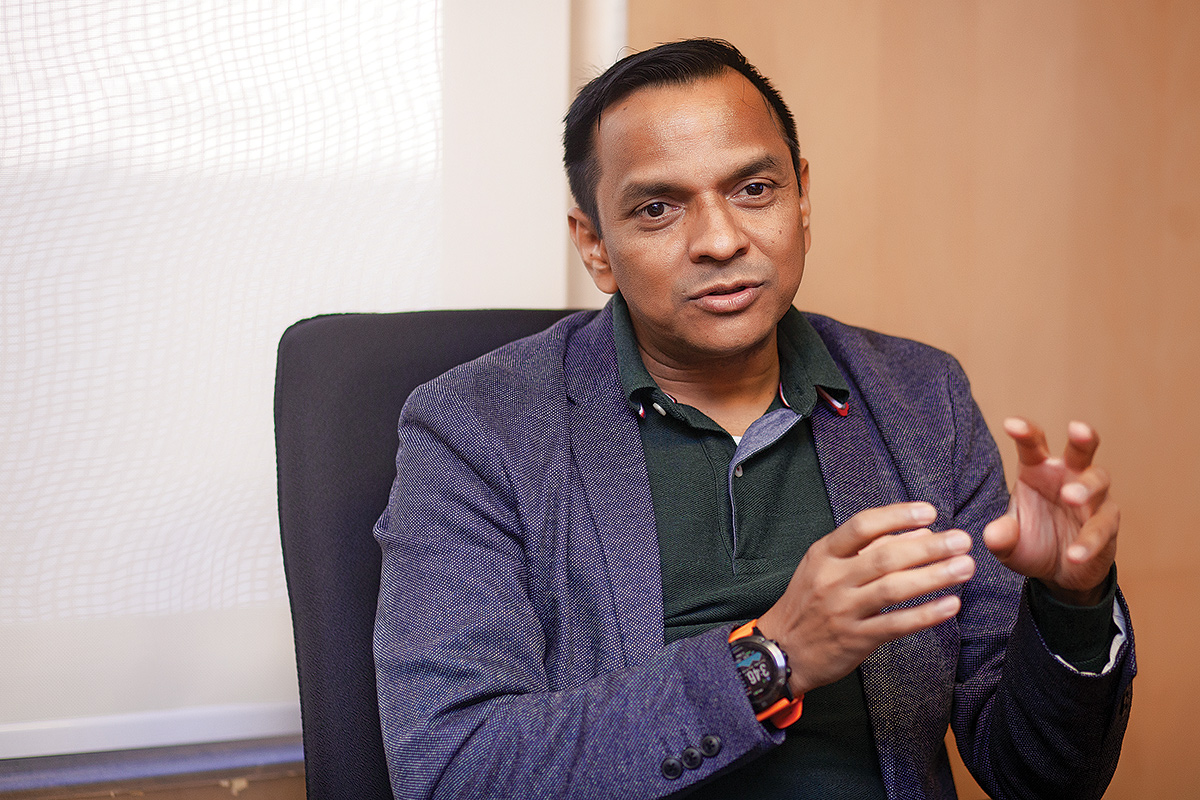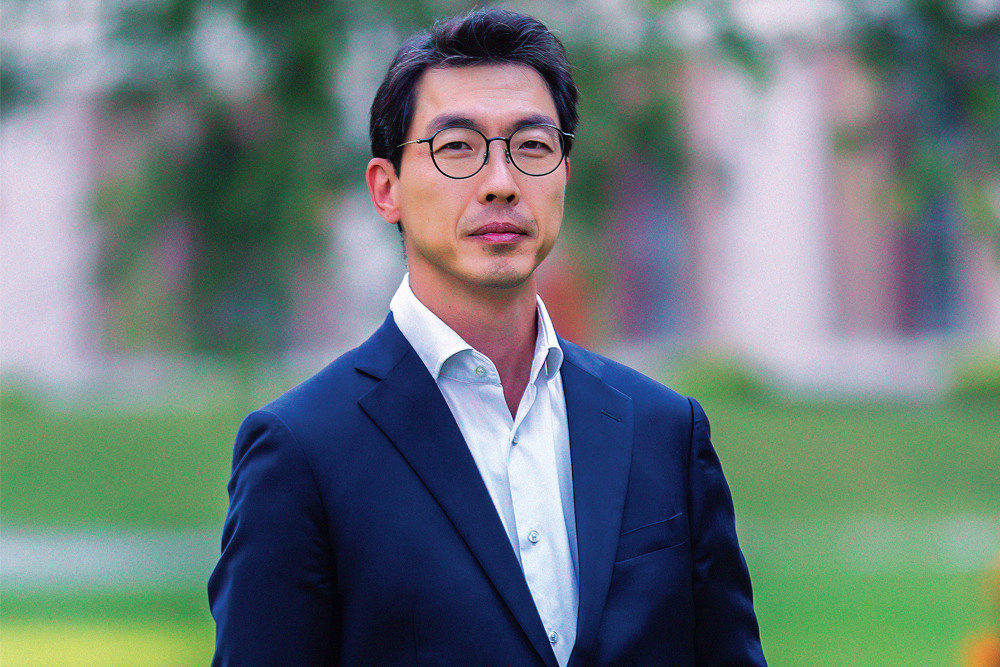
Zulfikar Bhutto is the Business Head Channel (Dealership) Strategy and Development: India and SAARC Region for Steelcase. Steelcase is US based furniture company founded in 1912, and the leading manufacturer of furniture for offices, hospitals and classrooms that is inspired by innovative research in workspace design.
Bhutto is responsible for dealer (channel), digital and offline business expansion, retention, business extraction and hyper growth in the Indian and SAARC region. Prior to joining Steelcase, Bhutto was the Regional Head for Tupperware India, Business Head at Lenovo, General Manager of Sales and Distribution at Haier Appliances India. and Regional Sales Manager at Siemens.
Bhutto describes himself as a growth evangelist who is result driven and a passionate business leader with the belief in ‘Being better is about customer relevance as much as great execution.’
In a conversation with B360’s Avant Shrestha, Zulfikar Bhutto talks about Steelcase’s history, future pathways and the company’s venture into new markets, his recent visit to Nepal and Steelcase’s new budding partnership with the Golchha Group.

What does Steelcase represent?
Steelcase is a design thinking company. Design thinking is in the DNA and it’s in the core of everything we do. So when I say design thinking, it originates from the idea of solving problems. Steelcase through this design thinking application tries solving problems not only for now but for the future also. We design spaces that are very aspirational and make people feel like going to the office. We make employees feel like they belong there. And that’s why we say love what you do and ‘love how you work’.What should a potential Steelcase customer know about your company?
Well at Steelcase it’s all about people. We work very closely with our architects, designers, customers and clients. People are the core of every product and application that we design. When our architect and designers are designing a space for our clients or customers, we are designing that space with an objective because we as a company understand the need to optimally utilise that space. Why people should know us is because we are a global leader in office furniture. For almost about 100 years, we have been in this industry. We don’t make anything else. The only thing we make and perfect is furniture. We know, we sleep, eat and drink only furniture. And we understand this business and we have been fairly successful for the last 100-odd years. And right now, I believe it is the correct time to enter the Nepali market and delight our customers. So for those new potential customers who are looking for application and solution to increase the productivity and to increase the engagement of their employees, Steelcase should be their preferred partner.110 years is a wonderful history and legacy to possess. According to you what are the key elements for the success of Steelcase for over a century?
In 1912, the first product we conceived was out of a problem. The problem was that the wooden dustbin where one would usually throw their cigarette butts would catch fire. Somebody needed to think about the fact that it needed to be made out of steel. So we produced the first dustbin that was made out of steel which did not catch fire. It looks very simple, but that’s the idea from where we really started and the rest as they say is history. For over 100 years we have created iconic product after product. For example ‘Brody’ is one of our iconic products which basically is the fusion of ‘brain and body’ and thus its name. Any of the products that we design always has a meaning to it; it has a core and a functionality to it that helps you do more. And to do more, weather you are doing your work or you are relaxing or you are thinking about ideas, you want to do more with the time that is available to you. We help you do more. There are thousands of products which we have innovated and these have been appreciated in the market and that have excited our customers; we want that excitement to be there. Our key points are that we listen to our customer very closely, we hear what they need, and we design to solve their problem.What percent of the global market sales is attributed to India in terms of office furniture?
If you look at what India has gone through in the last 20-odd years, there has been a massive workplace requirement that has come up. I don’t have an exact number that I can give you but I believe it plays a very significant role. And I believe almost about 8 to 10% of the global market is catered through India and the Indian subcontinent. It has become a very significant work place. For example, in IT and ITeS sector, the biggest software platform has started to relocate or set up their offices in India. Since these offices have employees working here, I believe about 8 to 10% of that global requirement comes for India.
What is your core sales strategy and how was it adopted for India?
The core strategy for us is to really listen to our customers. However, I cannot go with a singular solution to fix all problems. One customer’s or an organisation’s problem and requirements will always be different from another customer or organisation. For example, in the banking sector, data privacy is of utmost importance. We take such objectives into account when we are designing a product. Through our product, we have to help bankers keep their data secured; that’s why we designed the ‘poly-vision glass’ that protects the work space and cannot be visible to others. Our strategy is to reach out to the customer, hear what they really need and redesign the entire products and applications. We help them not only in buying the right product. We design to optimise the office space.What is your focus in Nepal and how do you view the market size and sales target you have set for Nepal?
Well it took us almost 16 years for us to be here. It has been a 16-year journey in India where we had to build everything like the right product, right supply chain, right time to market, right strategy, right customer delight. It all took some time, and now we believe that we are ready for this. So when we look at Nepal, we consider Nepal to be a very important strategic market for us for two reasons. One, being a very dear friend to India and to add to the global market. And second, I feel that there is the right talent here. I see the youth who are doing amazing jobs both within Nepal and outside who are perhaps the biggest drivers of the economy. Plus we understand a lot of international companies are coming into Nepal and setting up shop. Similarly, Nepali companies are trying to go global and expand their business. When talking about offices here in Nepal whether a company has five or 50 or 500 employees, I believe they need and deserve the right workplace, the right solution and right office to work for. And those who are looking for better workplaces, elevated workplaces and workplaces of the future, we want to partner with them. This is what we want to propose. Any company, whether small, medium or big, whether in hospitality or telecom or IT or banking or retail or infrastructure or health care or education, all are our customers and we have specific solutions for them. We see a very significant market for us here.Steelcase emphasises on work environment, ‘if your environment is good you will work harder’, however, when it comes to Nepal, the scenario is quite different because most companies are unable to afford the best brands or services to make their work environment better. What kind of dynamics comes into play there?
Well, it not only applies to Nepal but most developing markets where most of the organisations are small to medium scaled and who are trying to set their footprints on a very tight budget. We do have some customers that fit the small to medium criteria. We not only engage to the multinational customers but we cater to customers who have 10-to-15-seater offices as well. Of course, we are performance brand and we are positioned in a certain level but it’s not that we are super expensive. Our products and applications are not so expensive that it cannot be afforded; the only thing is that the right planning is required. The challenge that I observe here especially in work place design is that the furniture comes last. So, when you design a room or a workspace you tend to put the furniture as the last component on your priority list. Actually it should be the other way around. Our objective is that furniture should also be designed with your interior designing. I always say that if you have to save money, save money on cosmetic appeal rather than one functionality. Allow people to sit and work more because when they become more productive, they will give results for the organisation. And I think organisations are based on productivity, and we help in increasing productivity. I always say that include your furniture in your budget right in the beginning, not at the last.With the Covid 19 situation, work dynamics are changing considerably with more focus on working from home. In such scenario what are going to be your company’s adjustments?
We have already adapted. We are perhaps one of the most agile and adapting companies. And because of our agility, we have been here for the last 110 years. Agility and adaptability are two very important factors not just for us but for everybody. Currently what we are seeing is that most of the work is happening from home. But in the near future, we will see a blend of home-office workspace which is basically a hybrid model. At least for the next 2-3 years, I believe a hybrid model will overtake the workspace concept where people will work few days from home and few days from office. Of course, there will be some jobs that will totally be moved to home where the employee will not be required to come to office. They will only come for some critical meetings and collaboration. The hybrid model will continue.How has the impact of Covid 19 been on manufacturing and demand for your product?
As you know we are into workplace and because of Covid 19 workplaces are not functional as they once were. Obviously our future products and projects have been delayed but fortunately we see that people are still working which is a beautiful thing. Whether they are working from office or now they are working from home, it’s wonderful to see that they are still working. Ideally offices are designed for you to work but even if you are working from home, you still require a desk and a chair. Our main focus has been in working with customers, primarily with clients and projects but we have shifted our strategies to B2B and B2C. And as we speak, right now we are fairly engaging with the clients who are buying chairs and desks for employees and even directly customers are buying from us through our e-commerce platform. But yes, there has been an overall impact of Covid 19. There is stress on manufacturing but we are hopeful that once we have the vaccine in place and the situation is under control, we will come back. And we expect that in another 12- 18 months or so things will become much better. But it is a tough and challenging time but this tough time also must pass.Steelcase recently opened a new ‘worklife’ center in Bengaluru to empower startups. With the startup ecosystem in Nepal on the rise, do you think there is an opportunity for Steelcase to open a ‘worklife’ center here?
Let me first explain what ‘worklife’ is. ‘Worklife’ is not like a showroom where you walk in and see the product. For us ‘worklife’ is an experience. ‘Worklife’ is a space that we host our clients, architects and designers, decision makers and thought-leaders; where we show them the application, and why the space is designed in a certain way. So, each of our rooms whether the meeting room or the board room or the cabin or the cafeteria or a collaborative working space, each room has a specific purpose. Different spaces have different objectives and hence these different applications. We designed these applications and different objectives for those spaces which you can experience. One of the reasons, why I am here is that we are also shortlisting spaces. Soon we will have our ‘worklife’ space here in Kathmandu as well. We are trying to create an iconic space here in Nepal for those who are looking for aspirational, futuristic workplace.Would you like to comment on your visit and the new relationship between Steelcase and Golchha Group?
We have been discussing this partnership for almost a year now. They have visited us couple of times and I have visited here couple of times as well. The relationship between us is a long term relation. Steelcase always believes that the average lifespan of a relationship between partners is 40 years. So, we look for a long-term relationship as we have dealers and channel partners who are into third and second generation in the business. And I am very happy that we got the right partner here in Nepal that will represent the Steelcase brand. The Golchha Group are a very respected organisation here in Nepal and Steelcase is a global organisation, so we wanted the right partner who could present the brand here in Nepal with the same ethos and belief.
Published Date: January 14, 2021, 12:00 am
Post Comment
E-Magazine
RELATED Face 2 Face



.jpg)
.jpg)
.jpg)